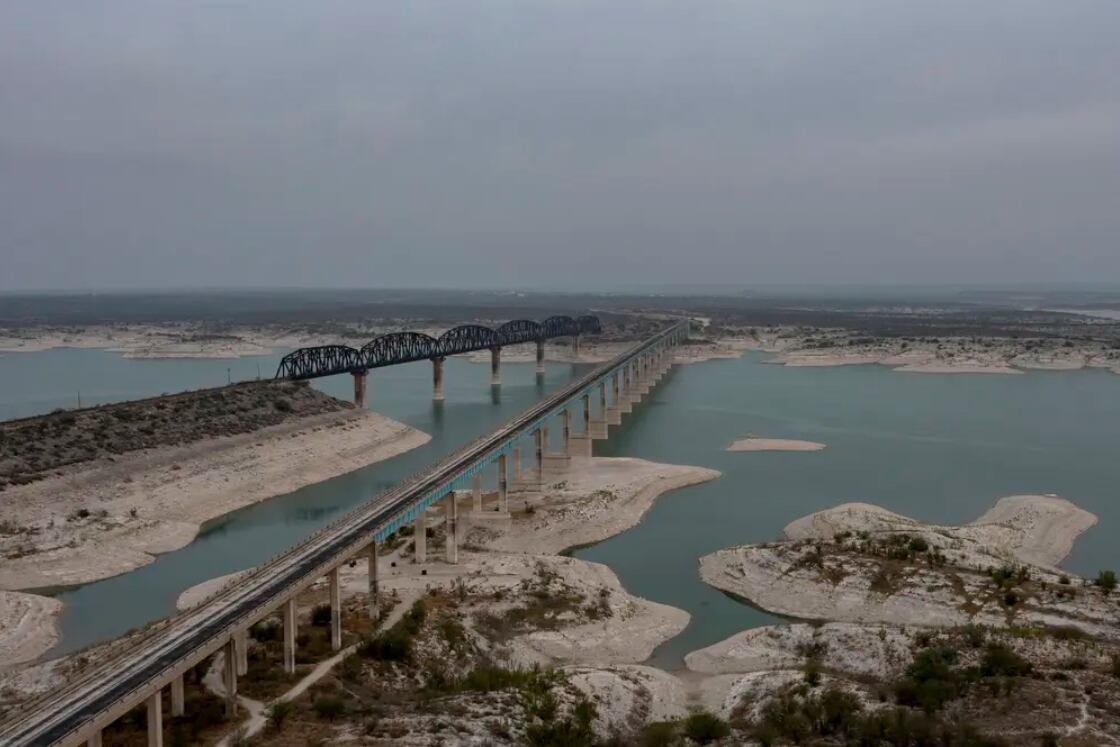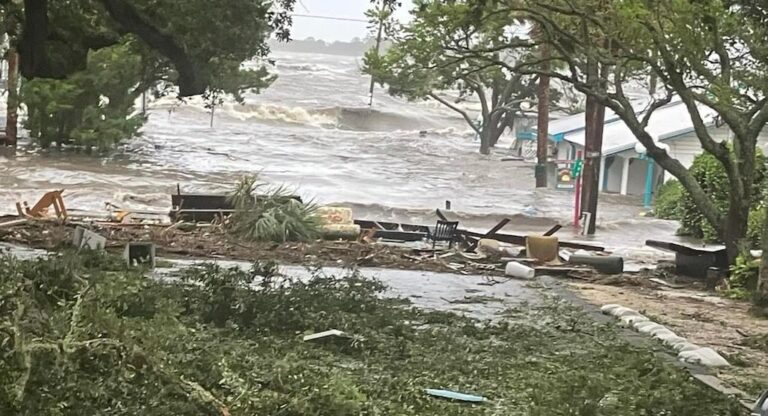Data shows Rio Grande water shortage is not just due to Mexico’s lack of water deliveries
“Data shows Rio Grande water shortage is not just due to Mexico’s lack of water deliveries” was first published by The Texas Tribune, a nonprofit, nonpartisan media organization that informs Texans — and engages with them — about public policy, politics, government and statewide issues.
McALLEN — Drought conditions in South Texas have brought increased pressure on Mexico to make good on its commitment to deliver water to the U.S. under a 1944 treaty. But an analysis by the agency that enforces that treaty shows that water from U.S. sources has significantly diminished over the years.
Research that will be shared publicly this week from the International Boundary and Water Commission, the federal agency tasked with overseeing the treaty with Mexico, shows that even without accounting for water deliveries owed by Mexico, the two international reservoirs that supply water to the Rio Grande, were receiving less water than they did during the 1980s.
During the decade from 2011 to 2020, total U.S. inflow into the Amistad International Reservoir was 33% less than the decade between 1981 and 1990, an overall decrease of 4.6 million acre feet, the IBWC research shows. Meanwhile, Falcon International Reservoir received 21.5% less than it did in the 1980s.
IBWC Commissioner Maria Elena Giner said the decline highlighted the need for the region to diversify its water supply, noting that 90% of the region’s water supply comes from the Rio Grande.
“This is something they really need to look at, as far as how they’re going to build drought resiliency in the region,” Giner said.
More local water supply corporations are looking to alternate sources of water as levels at the reservoirs continue to remain low. Currently, Amistad is at 19% of capacity while Falcon is at 12% of capacity.
In a statement, State Rep. Janie Lopez, R-San Benito, said the Texas Legislature needs to focus on “common sense and innovative solutions” to diversify the water resources available throughout the state and in the Rio Grande Valley.
Lopez also pointed out that during the last legislative session, lawmakers created the Texas Water Fund, a $1 billion resource to help cities upgrade their water systems and pay for conservation projects. The Texas Water Development Board detailed how those funds would be allocated last week.
While the analysis focused on how much water was lost from the U.S.’s own tributaries, Giner, the IBWC commissioner, said getting Mexico to comply with the 1944 treaty was still “front and center” for the agency.
Under the treaty, every five years, Mexico must deliver 1,750,000 acre-feet of water to the U.S. from six tributaries in Mexico, which averages to 350,000 acre-feet per year. In exchange, the U.S. delivers water from the Colorado River to Mexico.
But Mexico is behind on its deliveries by about 900,000 acre-feet in the current five-year cycle, which ends in October 2025.
Mexican officials have cited the country’s own drought conditions to explain the shortage. Nevertheless, U.S. officials have sought to pressure Mexico into complying by proposing restrictions on federal aid.
U.S. Rep. Vicente Gonzalez, D-McAllen, said the IBWC’s research supported what local farmers, ranchers and residents have known for years: The region faces an acute water crisis that has been exacerbated by Mexico’s water debt.
“We must use these findings to build up our water infrastructure and ensure timely water deliveries from Mexico,” Gonzalez said in a statement.
The IBWC is continuing talks with Mexican officials about a proposed amendment to the 1944 treaty, referred to as a “minute,” that would codify work groups to help build new sources of water and push Mexico to release water from its reservoirs instead of relying on water to spill over floodgates when rain is plentiful, and give Mexico incentives to deliver water on an annual basis.
Reporting in the Rio Grande Valley is supported in part by the Methodist Healthcare Ministries of South Texas, Inc.
This article originally appeared in The Texas Tribune at https://www.texastribune.org/2024/08/06/texas-mexico-border-rio-grande-water-supply-ibwc-treaty/.
The Texas Tribune is a member-supported, nonpartisan newsroom informing and engaging Texans on state politics and policy. Learn more at texastribune.org.







